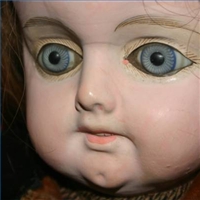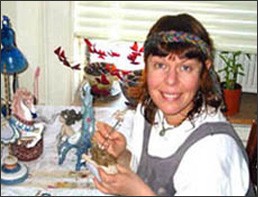
This a good article by Justin Harris on how to identify Fine Porcelain Dolls.
Collecting porcelain dolls is a popular hobby among youngsters and adults alike. While many children collect porcelain dolls simply for the beauty of the dolls and the joy that collecting them brings, many adults often collect porcelain dolls with an eye toward finding the finest, most valuable antique porcelain dolls they can locate. Learn how to identify fine porcelain dolls that will add value to your collection .
Instructions:
1. Look for deterioration from age. Crazing, or little criss-cross cracks in the porcelain, forms with age. A doll with heavy crazing is a very old doll. Fragile clothes are another indication of age. Do not attempt to repair or glue the damaged doll yourself. Consult a professional restoration expert for a free estimate.
2. Look for mold numbers or other markings. This is the best place to start when trying to identify a fine porcelain doll. Doll makers took pride in their work in the early days and identified each doll made by etching an identifying name or number on the back of a doll’s head, nape of the neck or shoulder plate. Locate these markings and use a guide (see Resources) to help you identify the maker and era of the porcelain doll.
3. Learn to recognize fine porcelain dolls by material and design. Porcelain dolls made in the 1800s will not have rooted hair. Porcelain dolls of the late 1800s and early 1900s, especially by German doll makers, are likely to be all-bisque composition. Bisque is unglazed porcelain, found chiefly in doll heads and limbs. What are the clothes made from. French and German doll makers were fond of using kid (soft leather) to outfit their porcelain dolls, especially in the 1800 and early 1900s. Composition dolls bodies (wood, sawdust, glue) are also a sign of early dolls.
4. Identify dolls by physical characteristics. Eyes set into the doll head that don’t move were common in the 1800s. Big round eyes with a sideways glance were popular the early 1900s. Some dolls from the 1800s were considered character dolls, made to look like living children and not stylized like other porcelain dolls. Often doll makers used their own children as models. These dolls look unique and very different from other porcelain dolls.
5. Have your doll professionally appraised if you are in doubt. Locate a local doll appraiser in your phone book or find one online (see Resources). Someone skilled in appraising fine porcelain dolls will be able to help you out.
Visit Luel Restoration Studio for all your repair and restoration needs.
Follow us on Facebook: www.facebook.com/chinarepair
www.luelstudio.com
email: luba at luelstudio.com


Speak Your Mind